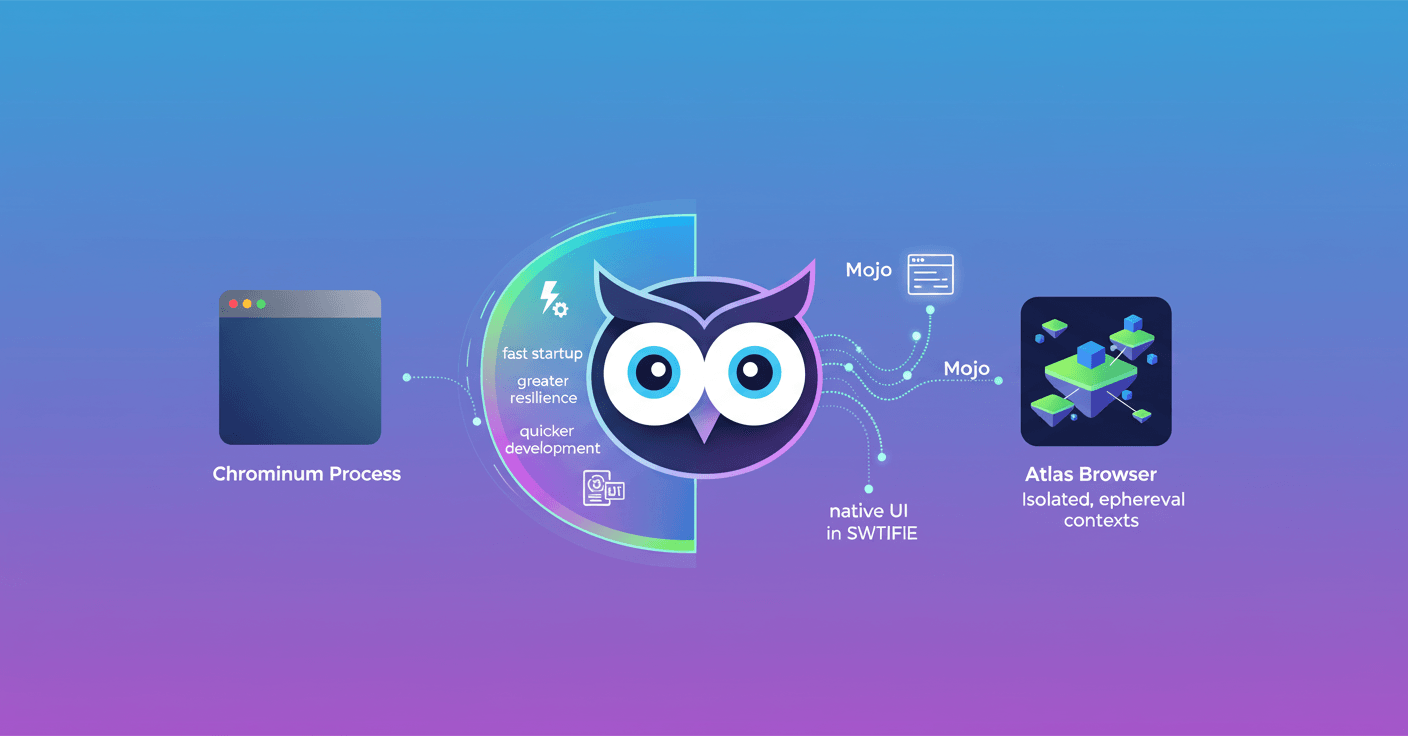Recently OpenAI launched ChatGPT Atlas, a browser that brings ChatGPT to the web to help you search, suggest, and complete tasks in context. But how do you turn a chat model into a real browser co-pilot? The key answer is a new architectural layer called OWL (OpenAI’s Web Layer).
What is OWL and why does it matter?
OWL is the way Atlas integrates Chromium without merging it into the main app. Instead of running the entire browser engine in the same process as the interface, OpenAI pulls the Chromium process into an isolated service (the OWL Host) and keeps the app (the OWL Client) in a separate process.
So what does that mean for you as a user? Less waiting when you open the browser, fewer freezes when a page gets heavy, and a more fluid native interface with modern animations. For the team, it means developing and testing faster without having to compile Chromium every time.
How it works, in simple words
-
Atlas is written almost entirely with native frameworks like
SwiftUIandAppKit, which lets it provide a rich UI without relying onChromium's open UI. -
Chromiumruns as a separate process (the OWL Host). The main app (OWL Client) talks to that host via IPC, usingChromium's messaging system,Mojo. OpenAI added bindings in Swift and TypeScript to make that communication easier. -
The client exposes a simple API in Swift with familiar concepts:
Session(global control),Profile(user state),WebView(embedded content), and service points for bookmarks, downloads, and extensions. -
Visually, it uses a shared composition container: each tab swaps its
WebViewinside the same visible area, whileChromiumkeeps the graphic buffers and GPU compositor.
Practical benefits you'll notice
-
Near-instant startup: Atlas paints pixels on screen while
Chromiumboots in the background. -
Fewer hangs and more resilience: if the
Chromiumengine crashes, Atlas' interface keeps responding. -
Faster development: most engineers don't need to build
Chromium; OWL is distributed internally as a prebuilt binary. The result? Changes that get tested and merged on day one. -
Cleaner code: by not inheriting all of
Chromium's open UI, the diff against upstream is much smaller and easier to manage.
How Atlas handles navigation with agents (agentic browsing)
Atlas lets automated agents interact with pages. That brings challenges: the model needs to see a single complete image of the screen and send events without breaking browser security. OpenAI solved this with two key ideas.
Visual composition
Elements that Chromium draws outside the main area, like select menus or pickers, are projected back into the main image the agent sees. That way the model receives a single coherent frame with all the context.
Events and isolation
Events generated by the agent are sent directly to the renderer; they don't go through the browser's privileged layers. That keeps security boundaries intact: for example, it prevents an automated keyboard shortcut from affecting the browser UI outside the web content.
Also, agent sessions can run in ephemeral "not signed in" contexts using in-memory storage partitions. Each session starts clean and is destroyed when finished; cookies and data are removed to avoid state leaks.
What this teaches us about the future of the web and AI
OWL isn't just a technical patch: it's a bet on separating the web platform from the rest of the native experience. The result is a browser that combines Chromium's compatibility and power with native interfaces and a much more agile development loop.
Can you imagine opening hundreds of tabs without the interface feeling slow? Or using agents that browse and act with full context without compromising your privacy? That's exactly what this approach aims to enable.
